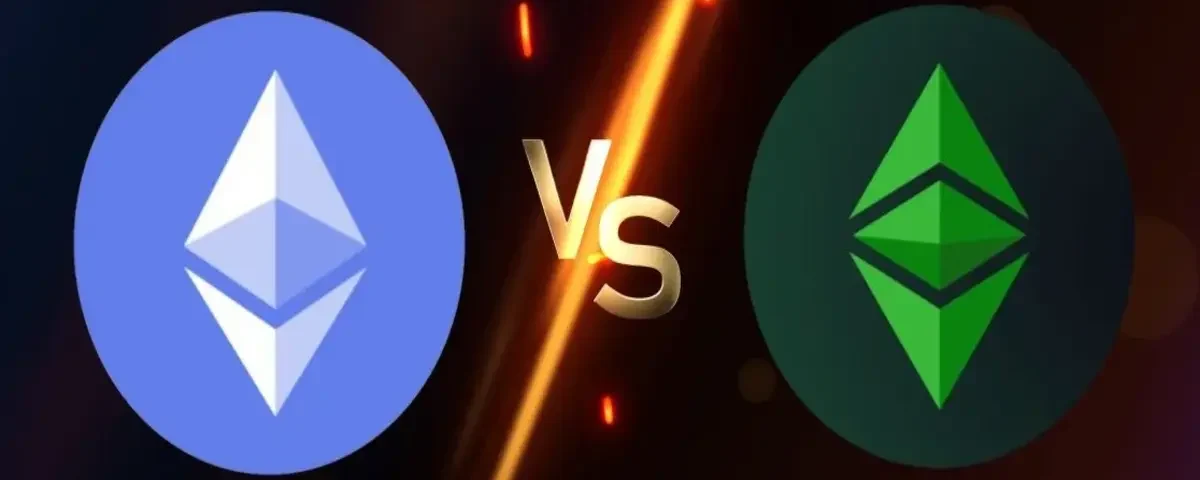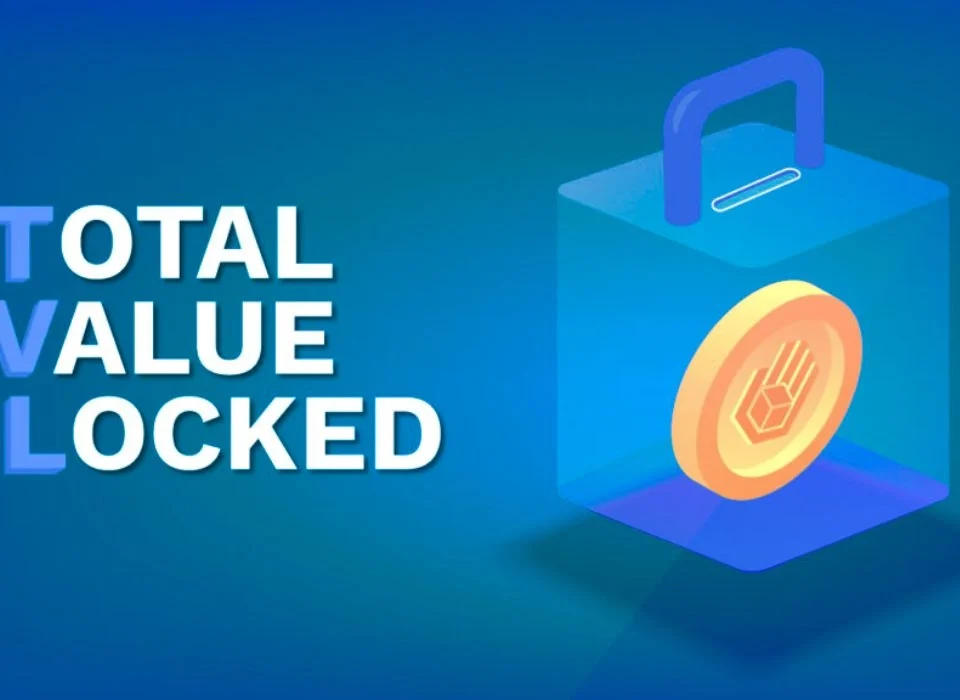
The Top 10 Cryptocurrency Tokens: History, Growth Factors, Risks, and Optimal Buying Times
11/08/2024
How to Use Crypto Staking Platforms: A Comprehensive Guide
15/08/2024Ethereum (ETH) and Ethereum Classic (ETC) are two distinct cryptocurrencies that originated from the same blockchain but diverged due to a fundamental disagreement within the community. Here’s a detailed explanation of the differences between Ethereum and Ethereum Classic:
1. Origin and History
Ethereum (ETH):
- Launch: Ethereum was launched in July 2015 by Vitalik Buterin and a team of developers. It was designed as a decentralized platform that allows developers to create smart contracts and decentralized applications (dApps).
- The DAO Incident: In 2016, a decentralized autonomous organization (DAO) built on Ethereum raised $150 million in an Initial Coin Offering (ICO). However, due to a vulnerability in the DAO’s code, a hacker exploited the system and drained $50 million worth of Ether.
- Hard Fork Decision: To address the hack, the Ethereum community decided to implement a hard fork. This fork effectively reversed the hack by moving the stolen funds to a new smart contract that allowed the original owners to withdraw their funds. The hard fork created a new version of the Ethereum blockchain, which is now known as Ethereum (ETH).
Ethereum Classic (ETC):
- Launch: Ethereum Classic is the original Ethereum blockchain that did not agree to the hard fork after the DAO hack. It continued on the original chain, maintaining the principle that “code is law,” meaning that transactions should remain immutable, even if they involve a hack or bug.
- Philosophy: Ethereum Classic adheres to the idea that blockchains should be immutable and that transactions should never be altered or reversed, regardless of circumstances.
2. Philosophy and Ideology
Ethereum (ETH):
- Immutability vs. Pragmatism: Ethereum prioritizes adaptability and pragmatic solutions. The community is willing to implement changes and hard forks to improve the network and address critical issues, even if it means reversing transactions in extreme cases (as was done in the DAO incident).
- Innovation: Ethereum is focused on innovation and development, with a large and active developer community. It is continuously evolving, with plans for future upgrades like Ethereum 2.0, which aims to transition the network to a Proof of Stake (PoS) consensus mechanism to improve scalability and energy efficiency.
Ethereum Classic (ETC):
- Code is Law: Ethereum Classic adheres to the principle that blockchain transactions should be immutable, meaning once a transaction is recorded, it cannot be altered. This philosophy reflects a commitment to the original vision of blockchain as an unchangeable ledger.
- Conservatism: ETC is more conservative in terms of implementing changes. The community tends to be cautious about making upgrades that could alter the fundamental characteristics of the blockchain.
3. Network and Development
Ethereum (ETH):
- Development and Upgrades: Ethereum has a vibrant development community and is one of the most actively developed blockchain networks. Major upgrades include the transition to Ethereum 2.0, which introduces PoS and sharding for scalability.
- Smart Contracts and dApps: Ethereum is the leading platform for smart contracts and dApps. It supports a wide range of decentralized applications, including those in DeFi, NFTs, and more.
- DeFi Ecosystem: Ethereum is the backbone of the decentralized finance (DeFi) movement, hosting the majority of DeFi applications and projects.
Ethereum Classic (ETC):
- Development Pace: Ethereum Classic has a smaller development community and a slower pace of innovation compared to Ethereum. While it continues to receive updates and security improvements, it lacks the same level of community support and developer activity as Ethereum.
- Compatibility: Initially, ETC was compatible with ETH, but over time, differences in protocol upgrades and philosophies have created some divergence. However, ETC still supports smart contracts and dApps, though its ecosystem is smaller.
- Security Concerns: ETC has faced several 51% attacks, where malicious actors gained control of more than 50% of the network’s hash power, leading to double-spending attacks. These security issues have raised concerns about the network’s stability.
4. Market Value and Adoption
Ethereum (ETH):
- Market Cap: Ethereum is the second-largest cryptocurrency by market capitalization, second only to Bitcoin. Its market value reflects its widespread adoption and critical role in the cryptocurrency ecosystem.
- Adoption: Ethereum is widely adopted by developers, enterprises, and financial institutions. It is the go-to platform for launching ICOs, DeFi projects, and NFTs.
- Liquidity: Ethereum has high liquidity, meaning it is easily tradable on most cryptocurrency exchanges with a significant trading volume.
Ethereum Classic (ETC):
- Market Cap: Ethereum Classic has a much smaller market capitalization compared to Ethereum. While it remains a significant cryptocurrency, it is often seen as a more niche investment.
- Adoption: ETC has a smaller but dedicated community of users and developers. Its adoption is limited compared to Ethereum, particularly in the areas of DeFi and NFTs.
- Liquidity: ETC has lower liquidity compared to ETH but is still widely available on many cryptocurrency exchanges.
5. Future Prospects
Ethereum (ETH):
- Ethereum 2.0: Ethereum’s transition to Ethereum 2.0 is one of the most anticipated events in the cryptocurrency space. This upgrade aims to address scalability issues, reduce gas fees, and transition the network from PoW to PoS.
- Continued Innovation: Ethereum’s future is tied to its ability to innovate and maintain its position as the leading platform for decentralized applications. The ongoing development and strong community support suggest a positive outlook for Ethereum.
Ethereum Classic (ETC):
- Longevity of Philosophy: ETC’s commitment to immutability and “code is law” philosophy will likely continue to attract users who value these principles. However, its slower pace of development and security challenges may limit its long-term growth.
- Potential Challenges: ETC faces ongoing challenges, including maintaining network security and relevance in a rapidly evolving blockchain landscape. It will need to address these issues to remain competitive.
Conclusion
Ethereum (ETH) and Ethereum Classic (ETC) are two distinct cryptocurrencies with shared origins but divergent paths. Ethereum has become the dominant platform for smart contracts and decentralized applications, driven by continuous innovation and strong community support. In contrast, Ethereum Classic remains true to the original principles of immutability but faces challenges in terms of development pace and network security.
Investors and users should consider these differences when deciding between the two, taking into account factors such as their investment philosophy, risk tolerance, and interest in the broader Ethereum ecosystem.



